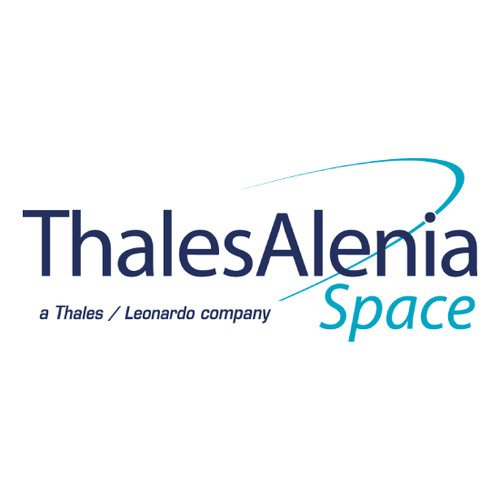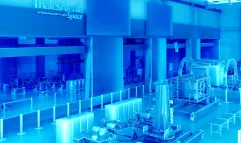This month, we celebrate ten years since Europe’s pioneering Intermediate eXperimental Vehicle (IXV) mission and the remarkable achievements of the team!

© ESA
Launched in February 2015, the IXV vehicle showcased crucial atmospheric reentry technologies in real-flight conditions, with its advanced aerodynamic and aerothermodynamic performance and thermal protection, navigation and control systems. Its flawless 100-minute suborbital flight spanned 25,000 kilometers through the atmosphere from an orbital velocity of 8 kilometers a second, culminating in a precise splashdown in the Pacific Ocean. This incredible success was the result of synergies between the European Space Agency and an industry consortium led by Thales Alenia Space.

© ESA
Europe’s aerothermodynamics experts are still gaining invaluable insights as they analyze the flight data to ensure their computer models align with reality, paving the way for future atmospheric reentry missions. IXV confirmed many assumptions and provided new information: lower-than-expected outside temperatures, higher fuel burn, balanced by superior aerodynamic performance, and a shorter blackout on reentry, which helps communications.
These incredible results will be foundational for Europe’s upcoming reentry vehicles. The next thrilling chapter is Space Rider, an innovative reusable space transportation system for uncrewed missions and routine access to low-Earth orbit.

© ESA
A heartfelt bravo to the IXV team for paving the way toward a future of groundbreaking space transportation and exploration!
To learn more about IXV’s importance for the future of European space transportation, we spoke to Giorgio Tumino, former ESA IXV Program Manager and Mission Director (today ESA’s Space Transportation Chief Technical Advisor), and our own Roberto Angelini, former Program Manager and now Engineering Director for Thales Alenia Space’s space exploration domain in Italy.

© Thales Alenia Space - On the left, Giorgio Tumino, on the right Roberto Angelini
What are your best memories of the mission?
Giorgio: For me, it’s the moment we acquired the telemetry from the vehicle after the comms blackout during the reentry phase. It confirmed the vehicle had survived the most extreme environment of the mission, functioning perfectly and communicating with the ground stations. Another great memory was the successful opening of the parachute. This operation is often overlooked and has caused other experimental missions to fail. With the chute deployed, we could recover the vehicle, making the mission a complete mission.
Roberto: I have two best memories. First is the sense of teamwork we established with ESA and all the teams, including the many subcontractor partners in this great endeavor. This was a key factor in our success. Second, the huge satisfaction after the successful splashdown and recovery, when you realize our years of hard work had paid off, with such a great result.
Giorgio, what did the successful IXV mission mean for Europe and space exploration?
IXV was successfully developed at a peculiar moment in history. We were advocating and pioneering reusability, despite the popular belief it wasn’t economically viable, after the rundown of the Hermes and Shuttle programs, and before SpaceX had achieved its disruptive success. IXV was — and still is — Europe’s first and only flight-proven experimental vehicle. It demonstrated lifting reentry capabilities and reusable technologies in a real operational environment. The mission helped Europe gain the unique know-how it needs to prepare reusable systems for space transportation and exploration in the future.
Roberto, what three things helped ensure mission success?
Technical competence, effective teamwork and a win-win approach with the customer and partners. I’d also add commitment to cost control, schedules and performance.
What’s your message to the European engineers who’ll build the reentry vehicles of the future?
Giorgio: Space missions are challenging to develop and implement, but reentry missions are even harder because the dynamics change so fast in real time. These vehicles have to withstand the harshest aerothermal and mechanical environments, which tests even the most advanced technologies and engineering solutions. Plus, there’s limited scope to intervene if something goes wrong. Since reusability is the big technological and operational frontier for spacefaring nations today, Europe’s next reentry engineers need to build on our achievements and be resolutely committed to taking European success to new heights with operationally reusable space systems. It’s hugely rewarding, both professionally and on a personal level.
Roberto: Ours is a dream job — I can’t think of anything better. We work on incredible projects and spacecraft with unimaginable levels of performance. It’s also challenging. Imagine an automated vehicle designed to reenter the atmosphere at a velocity of 7.5 kilometers a second. It requires passion, technical competence and the willingness to learn every day. We do all this in an international setting with the leading companies in Europe and worldwide. I can’t imagine anything more exciting. After 27 years at Thales Alenia Space, I’m as enthusiastic today as I was at the start!


